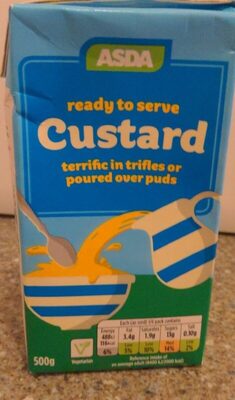
Barcode: 21115875
Custard
HALAL
📝 Reason: The product ‘Custard’ has been analyzed for Halal compliance. Most ingredients are plant-derived or dairy products, which are generally considered Halal. The ‘flavourings’ ingredient is marked as Doubtful due to unspecified origin. No Haram ingredients or E-codes were identified. Therefore, the product is classified as Halal with a note of caution regarding the flavourings.
🏷️ Category: Dairies, Condiments, Desserts, Dairy Desserts, Sauces, Creamy Puddings, Dessert Sauces, Custards And Pastry Creams, Groceries
📄 Certificates: Vegetarian, No Artificial Flavors, Fsc, Fsc Mix, No Artificial Colors, No Artificial Colours Or Flavours, No Hydrogenated Fats, Vegetarisch
Ingredients:
Details
Is Custard Halal? Find Out the Truth!
Custard is a delicious and creamy dessert that many enjoy, but for those adhering to Islamic dietary laws, its Halal status is a vital consideration. In this post, we will explore the Halal status of Custard by examining its ingredients, E-numbers, and certification context.
Understanding Custard’s Halal Status
The product ‘Custard’ has been analyzed for Halal compliance. After an extensive review of its ingredients, we find that most components are either plant-derived or dairy products, which are typically regarded as Halal. The only point of caution lies with the ‘flavourings’ ingredient, which is marked as Doubtful due to its unspecified origin. However, the absence of any Haram ingredients or E-codes leads us to confidently classify this Custard as Halal with a note of caution regarding its flavourings.
Ingredients Breakdown
The ingredients of Custard include: reconstituted skimmed milk, reconstituted buttermilk (milk), sugar, water, modified maize starch, palm oil, coconut oil, flavourings, stabiliser (triphosphates), colours (annatto), and colours (curcumin). Now, let’s delve deeper into each ingredient:
- Reconstituted Skimmed Milk: A dairy product that is generally considered Halal unless contaminated with Haram substances.
- Reconstituted Buttermilk (Milk): Also a dairy product and generally regarded as Halal under Islamic dietary laws.
- Sugar: This ingredient is plant-derived and considered Halal.
- Water: The most natural and essential substance, which is Halal.
- Modified Maize Starch: Derived from corn, it is plant-based and typically Halal.
- Palm Oil: A plant-derived oil, also regarded as Halal.
- Coconut Oil: Again, a plant-derived oil that is generally Halal.
- Flavourings: This ingredient poses the greatest uncertainty. The source is unspecified, meaning it could be Halal or Haram depending on its origin.
- Stabiliser (Triphosphates – E451): Not listed in Haram or Doubtful E-codes, it is generally considered Halal.
- Colours (Annatto – E160b): A plant-derived food colour, also seen as Halal.
- Colours (Curcumin – E100): Another plant-derived colour that is not associated with any Haram or Doubtful E-codes, thus considered Halal.
E-Numbers and Their Halal Status
While analyzing Custard, it’s important to address its E-numbers. The following E-numbers were identified:
- E451 (Triphosphates): Generally considered Halal, this stabiliser ensures the texture and consistency of the Custard.
- E160b (Annatto): This natural colour derived from the seeds of the achiote tree is plant-based and Halal.
- E100 (Curcumin): Another natural dye primarily extracted from turmeric, deemed Halal.
No harmful or questionable E-codes are present in this Custard, underlining its Halal standing.
Brand, Category, and Certification Context
This Custard falls under various categories, including Dairies, Condiments, Desserts, Dairy Desserts, Sauces, Creamy Puddings, and specifically Custards and Pastry Creams. It holds numerous certifications, including Vegetarian, No Artificial Flavors, FSC, No Artificial Colors, No Artificial Colours or Flavours, and No Hydrogenated Fats. These certifications enhance its appeal to consumers seeking clean, responsibly produced food options.
In conclusion, when examining the Custard we love, we see that while it’s generally Halal and free from any direct Haram contaminants, consumers should be aware of the unspecified ‘flavourings’ ingredient. It is advisable to reach out to the manufacturer for clarity regarding this component. As always, when in doubt, seek information that helps you adhere to your dietary choices. Enjoy your Custard!
